
Overview
This article shares nine must-know practices for crafting effective instruction guides. You might be wondering why these practices matter—well, they focus on clear objectives, engaging content, and structured assessments, all designed to boost learning outcomes. Supported by research and real-world examples, these strategies show how storytelling, reflective questions, and active learning techniques can really ramp up learner engagement and retention. So, let’s dive in and explore how these approaches can make a difference in your instructional design!
Key Highlights:
- Start with a compelling introduction to engage the audience, using storytelling or relatable scenarios.
- Clear, concise educational objectives enhance learner performance and provide direction.
- Stimulate recall of prior knowledge through reflective questions to improve understanding of new concepts.
- Organise content with headings, bullet points, and visual aids to make it easier to digest.
- Include learning guidance throughout instructional materials to enhance comprehension and retention.
- Incorporate practical application activities, such as case studies, to reinforce learning and connect theory to real-world scenarios.
- Utilise self-assessment tools like quizzes and checklists to empower learners and gauge understanding.
- Implement a balanced mix of formative and summative assessments to evaluate performance effectively.
- Enhance retention by using spaced repetition and summarization techniques to reinforce key concepts.
Introduction
Crafting effective instruction guides isn’t just a task; it’s a chance to transform learning experiences and boost knowledge retention. You might be wondering how to create content that not only grabs attention but also drives understanding and application. Well, by implementing some essential practices, educators can do just that! So, how can we ensure these guides resonate with learners and truly support their educational journey? This article explores nine crucial strategies that promise to elevate instructional design, empower users, and ultimately create a more productive learning environment. Now, let’s dive into these strategies together!
Capture Audience Engagement from the Start
Want to capture your audience's attention? Start with a compelling introduction that highlights why the content matters. You might be wondering how to do this effectively. Well, storytelling techniques or relatable scenarios can really draw people in.
Take Anastasia Masadi, for example, a Product Owner who said, "SowFlow has been a game changer in the way we document work and deliver to our clients. I do not have to take each screenshot separately, and I can create SOPs and training materials without leaving the browser, utilizing the instruction guides. SowFlow gave me time from my life back."
This kind of real-world experience immediately connects with what your audience needs and wants, illustrating how SowFlow can enhance efficiency and streamline the creation of instruction guides and SOPs for teams. And don’t forget to incorporate visuals or interactive elements that SowFlow supports to keep that interest alive!
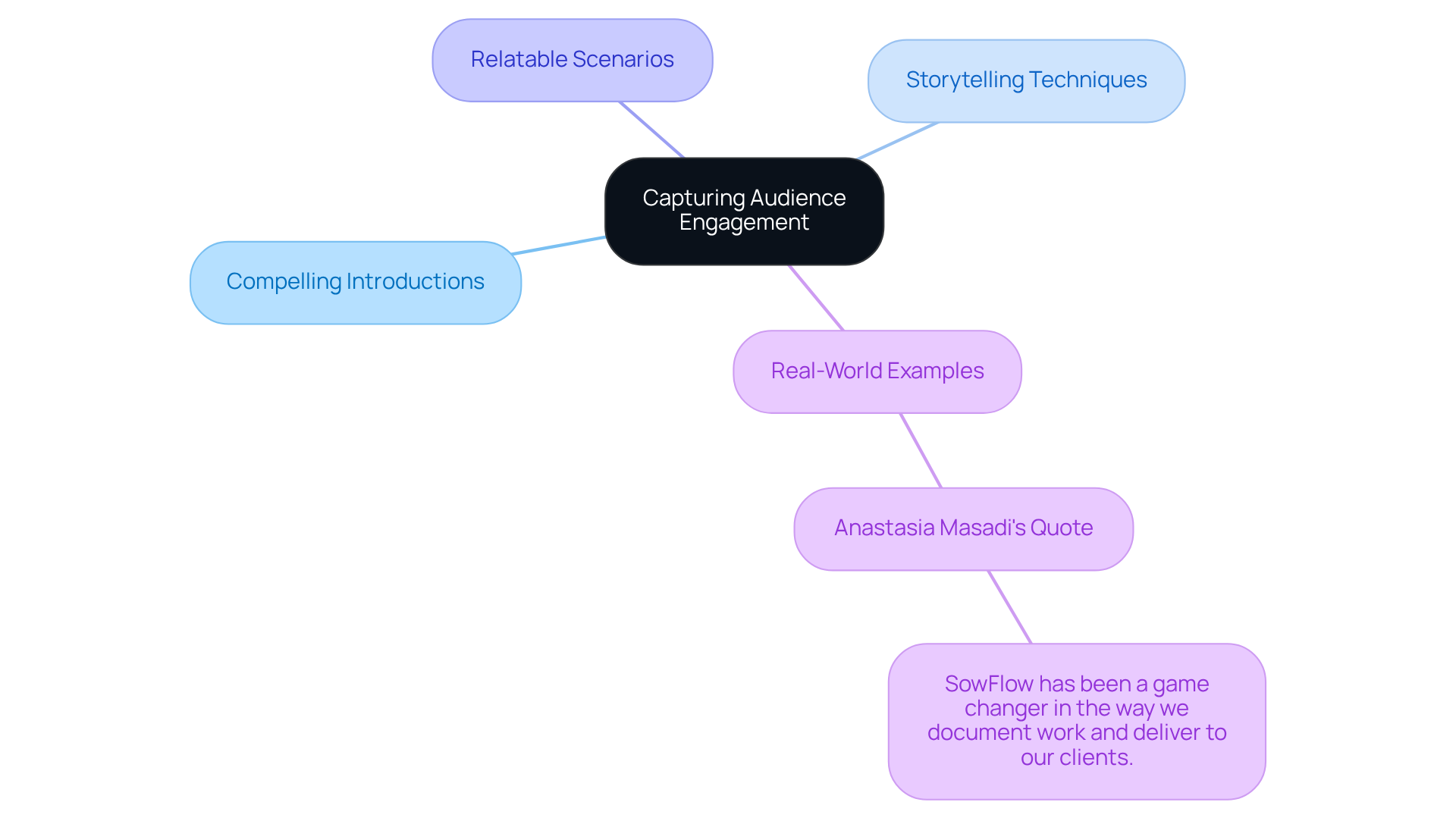
Define Clear Objectives for Effective Learning
You might be wondering how to guarantee successful education, right? Well, it all starts with having clear and concise goals in each of the instruction guides. For example, when you're introducing a new software tool, your objectives could be something like 'understanding the main features' and 'learning how to complete a specific task.' This approach not only sets clear expectations for your audience but also helps them assess their understanding as they work through the material.
Research shows that having well-defined educational objectives can really boost learner performance. It gives them a solid sense of direction and clarity. By laying out specific, measurable outcomes—like 'users will be able to create a new project within the software by the end of the instruction guides'—trainers can create a more targeted instructional experience. Think of effective educational objectives as your roadmap, guiding users through the content and ensuring they pick up the necessary skills and knowledge along the way.
As specialists point out, strong educational objectives are key to developing engaging content and meaningful evaluations, which ultimately leads to better outcomes for students. So, by prioritizing the establishment of clear objectives, organizations can really enhance the effectiveness of their instruction guides and empower users to hit their educational goals.
Now, speaking of making things easier, with SowFlow's instant documentation solution, users can quickly create and update these objectives. They can take advantage of features like template customization and real-time collaboration to keep their guides relevant in today’s fast-paced business world. This streamlined method not only saves time but also makes the overall educational experience much better.
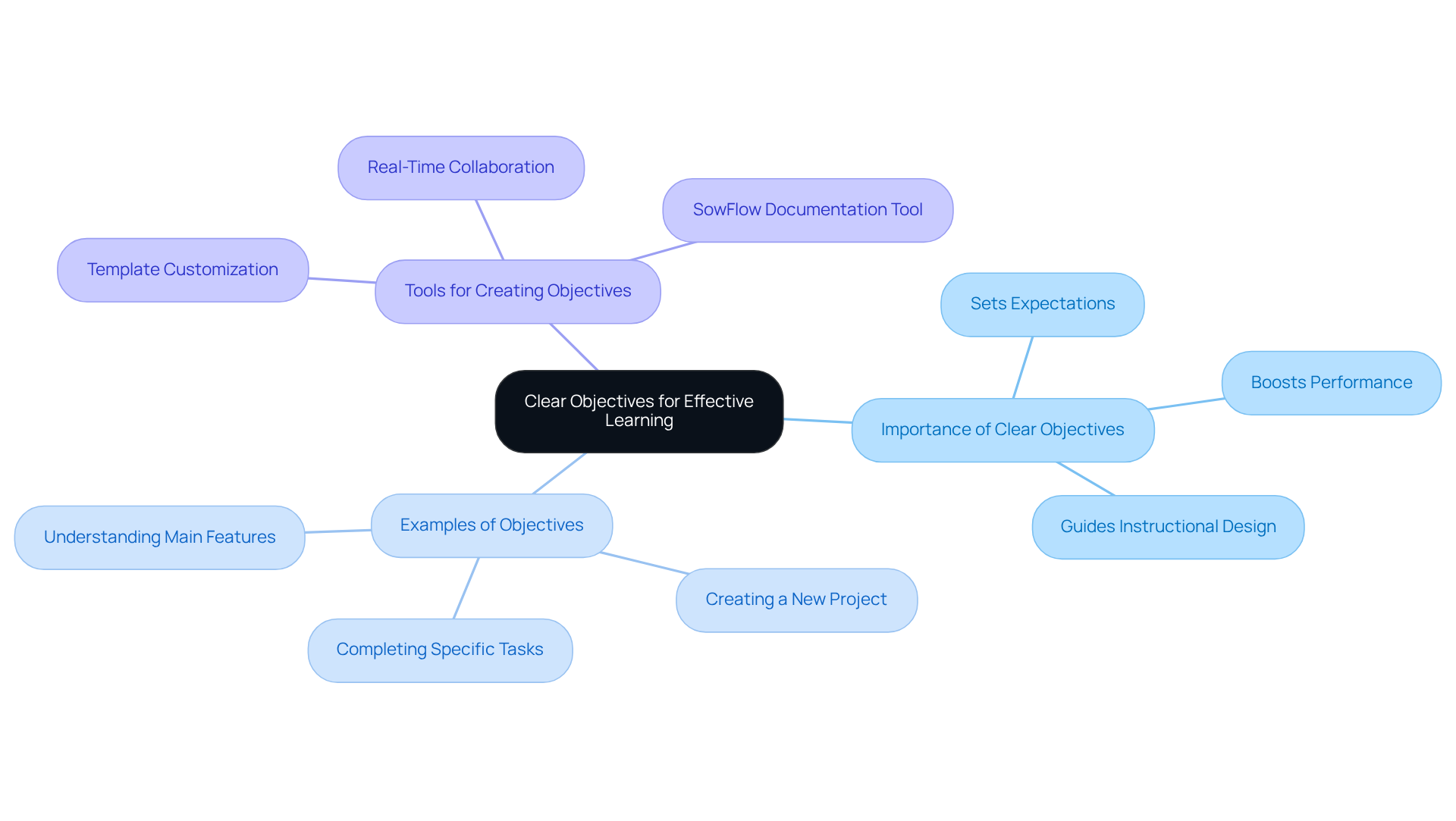
Stimulate Recall of Prior Knowledge
You might be wondering how to really get students involved and boost their understanding of new concepts. Well, incorporating reflective questions or prompts can be a game changer! For instance, before diving into a new function in a software manual, why not encourage users to think back on how they tackled similar tasks in the past? This little nudge can significantly enhance their understanding. Not only does it draw students in, but it also taps into their prior knowledge, making it easier to absorb new information.
Research shows that students who engaged in this reflective practice experienced less summer knowledge loss compared to those who didn’t. This really highlights the power of connecting new content to what learners already know. As psychologist David Ausubel wisely said, "The most important single factor influencing learning is what the individual already knows." By encouraging reflection on past experiences, we pave the way for a deeper understanding, making it easier for users to grasp new concepts. This ultimately leads to more effective instruction guides.
Now, let’s dive into some tools that can help! Using advance organizers like K-W-L can further enhance this approach by helping individuals structure their thoughts and connections. Just keep in mind, it's important to avoid common pitfalls, like bombarding learners with too many questions at once. That can actually hinder the learning process instead of helping it. So, let’s keep it simple and effective!
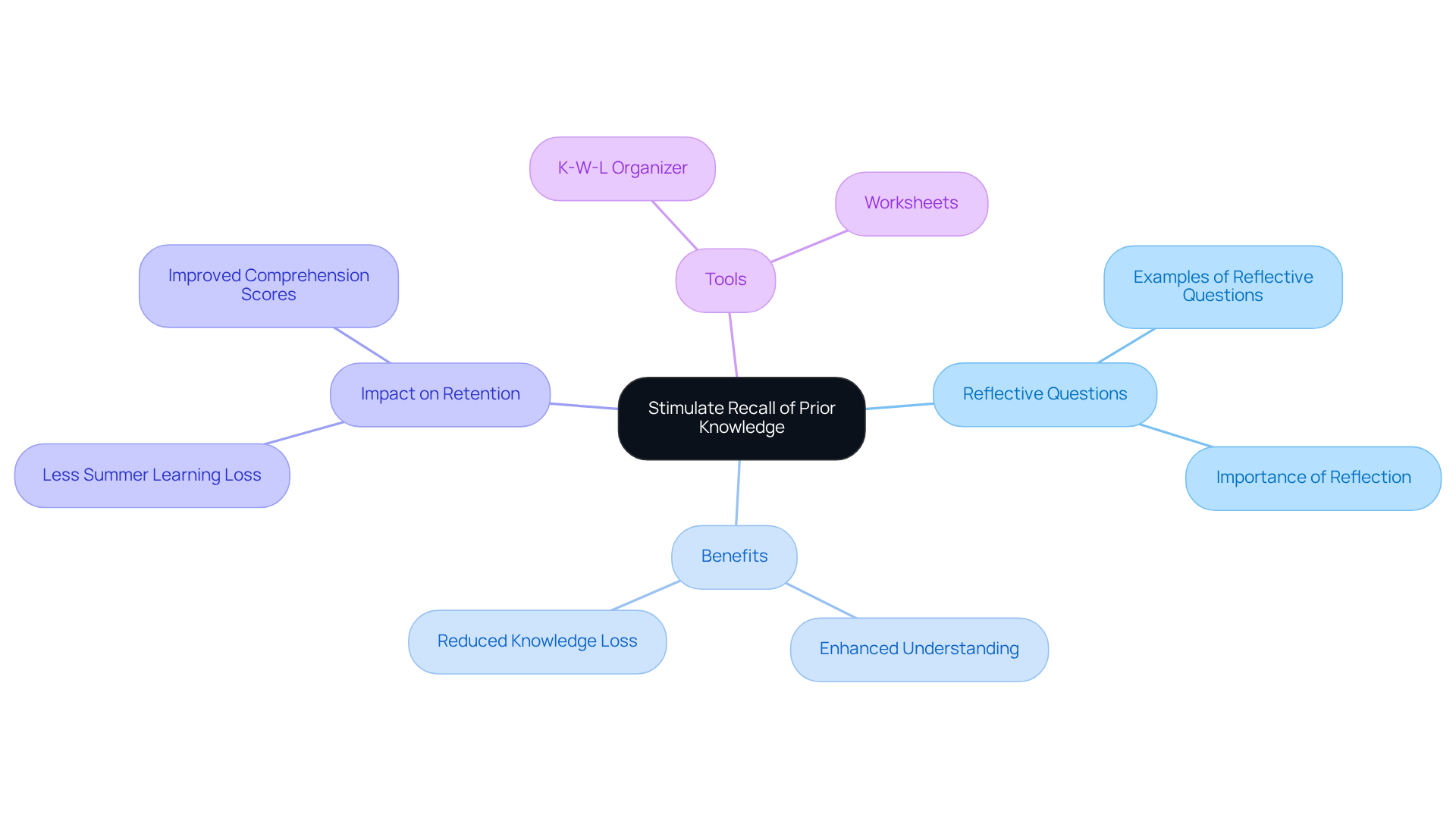
Present Content in a Structured Manner
Let’s talk about organizing your content! You might be wondering how to make it easier to digest. One great way is to break everything down into clearly defined sections with instruction guides that feature headings and subheadings. Think about using bullet points, numbered lists, and even some visual aids to simplify complex information. For example, if you’re creating instruction guides for making SOPs, you could divide it into handy sections like:
- Introduction
- Step-by-Step Process
- Common Pitfalls
This way, users can easily navigate through the material without feeling overwhelmed.
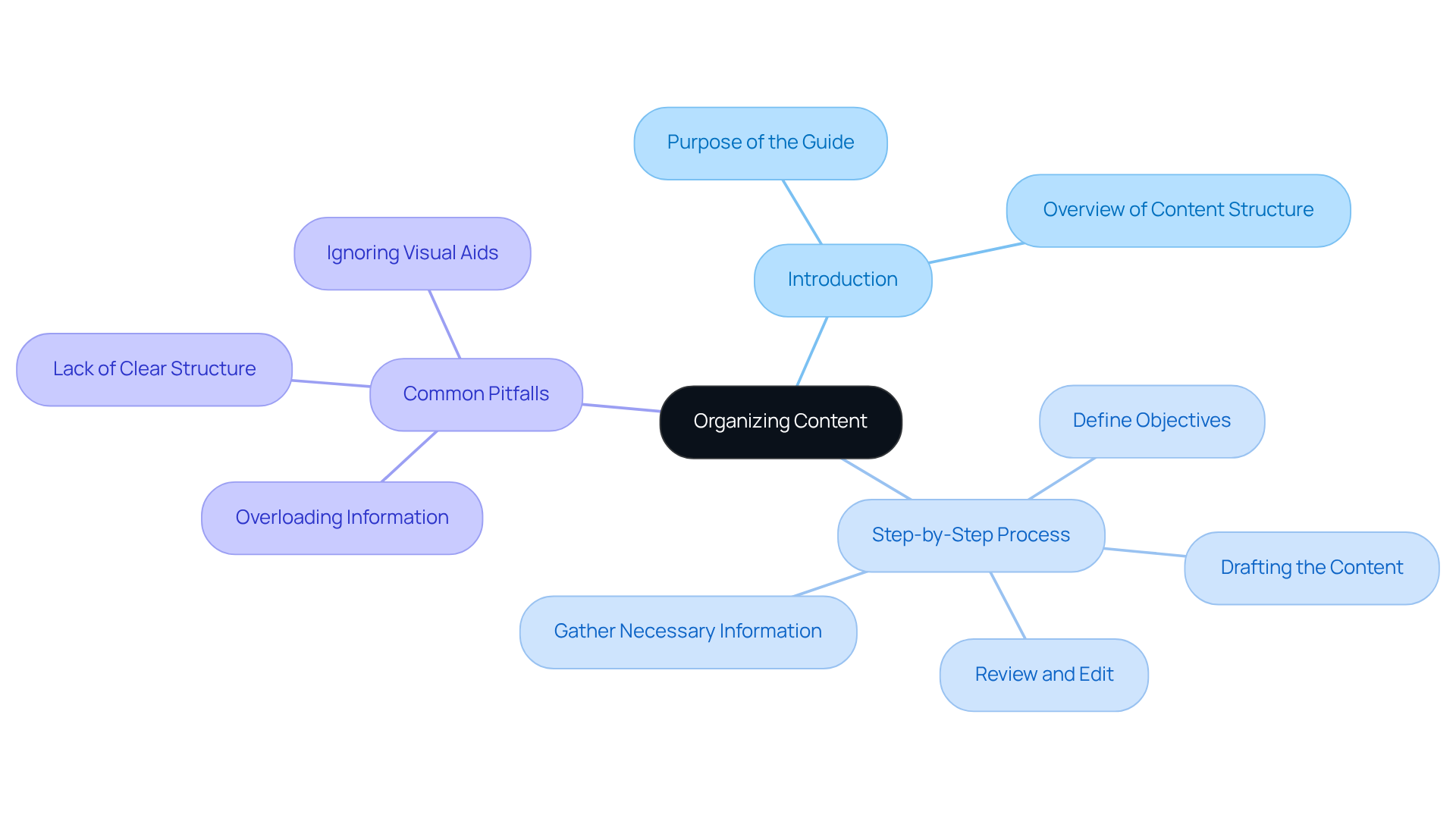
Offer Learning Guidance Throughout the Process
Including suggestions, cues, and reminders throughout instructional guides is super important for successful understanding. You might be wondering how to make complex features easier to digest—consider adding a sidebar that highlights best practices or common pitfalls to avoid. This method not only strengthens the learning experience but also gives individuals practical guidance they can apply right away.
Research shows that active learners retain significantly more information—93.5% compared to 79% for passive learners. This really underscores the value of engaging instructional content! By embedding actionable insights within tutorials, organizations can boost knowledge retention and improve overall training outcomes. With SowFlow's instant documentation solution, teams can whip up user manuals effortlessly, making it easy to incorporate these insights.
Now, let’s talk about onboarding. Utilizing structured processes that incorporate these best practices can lead to a remarkable 62% increase in new hire productivity. How cool is that? This shows just how effective active learning strategies can be in fostering a more engaged and informed workforce. As Anastasia Masadi, a Product Owner, puts it, "SowFlow has been a game changer in the way we document work and deliver to our clients."
To further improve instruction guides, why not incorporate expert insights on common challenges and solutions? This can really offer users a deeper understanding of the material. Plus, SowFlow's ability to update and revise documentation with ease ensures that these insights stay relevant and accessible. Neglecting to include these tips might lead to reduced participant engagement and retention. By creating a comprehensive teaching experience that emphasizes practical application, organizations can ensure that their teams are not only informed but also empowered to succeed.
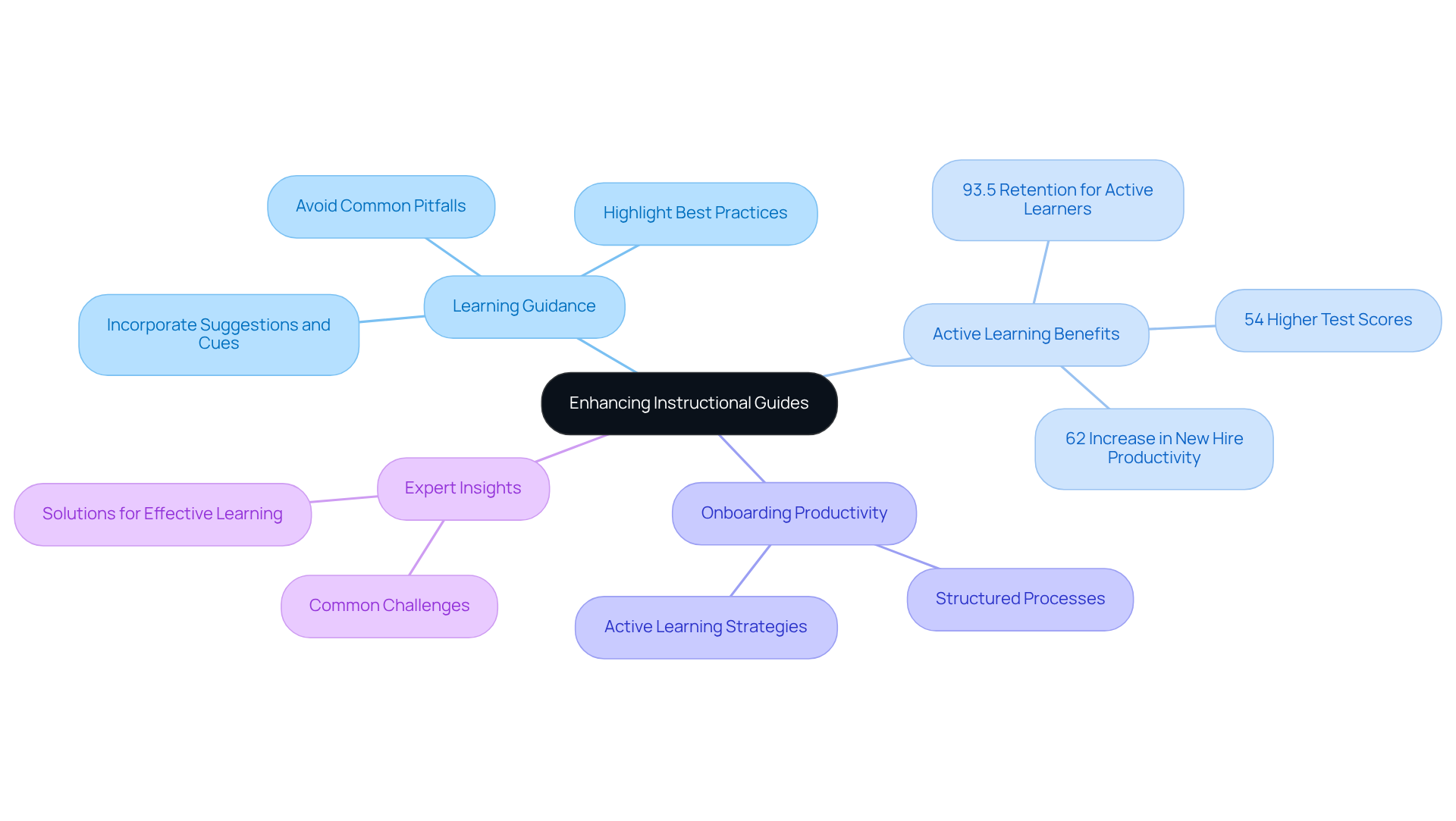
Elicit Performance Through Practical Application
You might be wondering how to make education really stick, especially in software training. Well, integrating activities that require participants to use the concepts from instructional materials is key. For example, after explaining a specific process, why not present a case study where learners have to figure out how to apply that process in a hypothetical scenario? This hands-on approach not only boosts understanding but also shows how the material connects to real-world applications.
Did you know that active educational environments can lead to a 54% improvement in retention rates compared to traditional methods? That’s especially true in software training! Plus, organizations that embrace these active learning strategies often see a 21% increase in profitability and a 17% rise in productivity. These numbers really underscore the value of engaging participants through practical exercises.
Speaking of exercises, have you tried the 'Think, Pair, Share' technique? It’s a fantastic way to get participants to think individually before discussing their insights with a partner and then sharing with the larger group. This method not only fosters critical thinking but also ensures that everyone’s voice is heard, enhancing the educational experience.
Another great example is the 'Journalistic Six' method, which takes about 20-45 minutes. Participants analyze topics by answering essential questions:
- Who
- What
- When
- Where
- Why
- How
This exercise sparks curiosity and clarity, leading to a deeper understanding of the subject matter.
By including these exercises in your instruction guides, you can create a vibrant educational atmosphere that engages participants and significantly boosts knowledge retention and application in software training. And don’t forget the case study on 'Active Learning Strategies'—it highlights measurable business outcomes from using these techniques, reinforcing just how effective they can be.
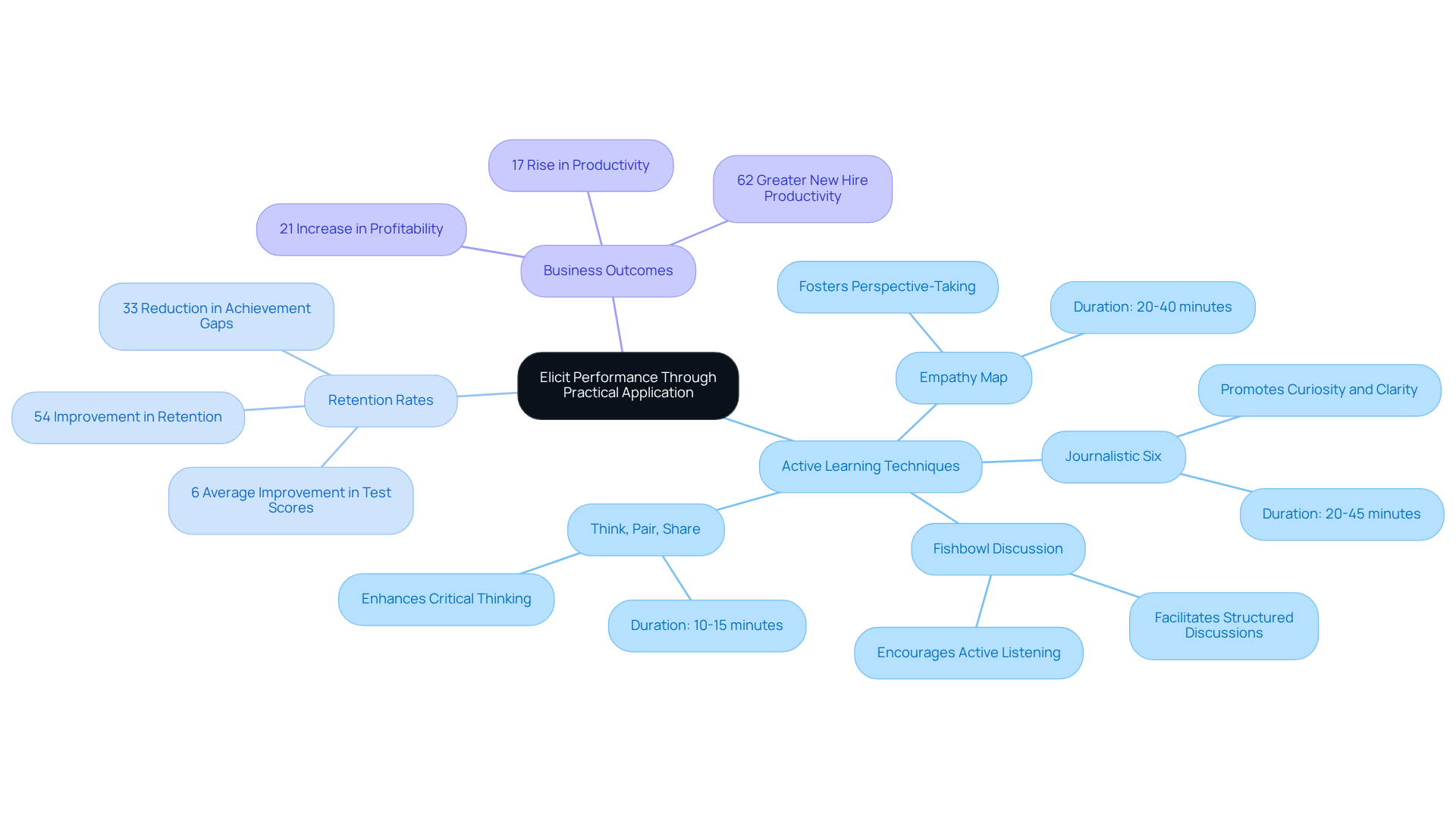
Provide Constructive Feedback for Improvement
You might be wondering how to really gauge your understanding of a subject. Well, incorporating self-assessment tools like quizzes and checklists is a fantastic way to do just that! These tools not only spark your participation but also empower you to take charge of your own educational journey. It’s crucial to have clear criteria for success, so you know what effective performance looks like. For instance, after a hands-on exercise, you can pull out a checklist to see how your work stacks up against the best practices.
Now, let’s talk about why self-evaluation tools are a big deal in education. Research shows that feedback mechanisms, especially those that let you evaluate yourself, are key players in boosting student improvement. A massive meta-study involving around 20 to 30 million students found that effective feedback can really amp up learning outcomes, ranking it among the top 5-10 factors that influence achievement. Pretty impressive, right?
So, what do self-evaluation tools look like in training programs? Think reflective journals, peer assessments, and digital quizzes that adapt to how confident you feel. These tools are great because they give you quick insights into your understanding and help tailor future teaching materials to fit your needs. By weaving self-evaluation tools into your learning experience, organizations can create a more organized and efficient atmosphere, leading to better performance and less time wasted in lengthy meetings.
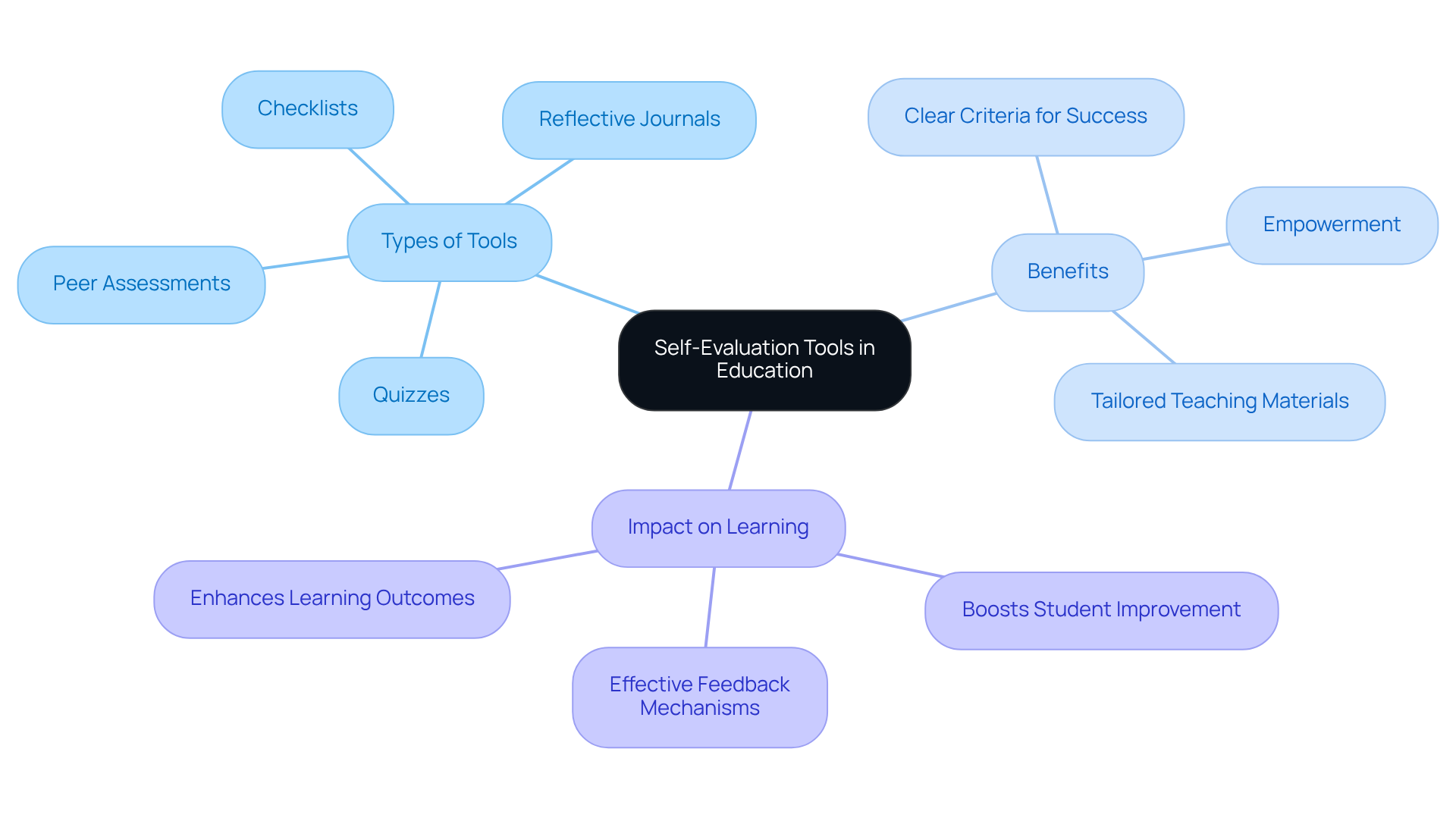
Assess Performance to Ensure Effectiveness
You might be wondering how to really gauge understanding and retention in your instruction guides, right? Well, incorporating assessments at various stages is key! A balanced mix of formative assessments—think quizzes and interactive activities—paired with summative evaluations like final projects gives you a well-rounded view of student performance. Research shows that formative assessments can supercharge learner retention. In fact, students who regularly engage in self-assessment tend to show better comprehension and retention rates.
For example, the Learning Assessment Technique (LAT) can help you pinpoint educational objectives and evaluate outcomes effectively. This dual approach not only boosts learning but also gives you essential insights into how your teaching materials are performing, allowing for timely tweaks and improvements. Plus, keeping thorough records in your educational environment is a game-changer for evaluation procedures. It ensures that your teaching materials remain relevant and up-to-date.
By using effective evaluation techniques, you can create instruction guides that not only inform but also engage students, leading to better educational outcomes. However, it’s important to watch out for some common pitfalls. For instance, relying too heavily on quizzes without mixing in diverse assessment methods can limit how well you evaluate student performance. So, let’s keep it varied and engaging!
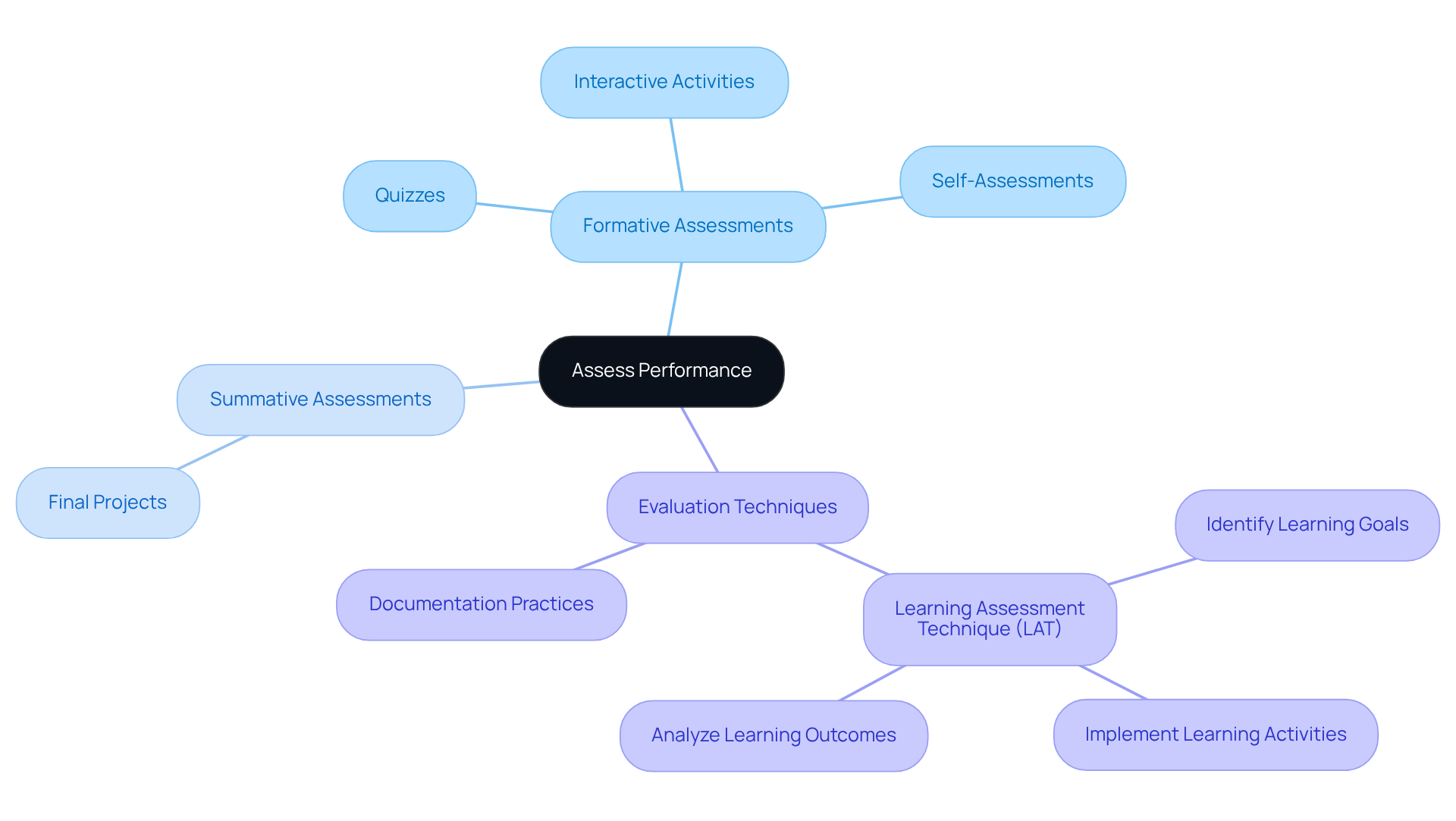
Enhance Retention and Transfer of Knowledge
To enhance your retention and transfer of knowledge, have you considered incorporating techniques like spaced repetition, summarization, and real-world application scenarios into your instruction guides? Spaced repetition is a fantastic technique that’s been shown to boost long-term retention by encouraging you to revisit key concepts at intervals. Research even suggests that this method can improve retention rates by up to 50%! That’s pretty impressive, especially in adult learning environments.
You might want to encourage your students to summarize the main points after finishing a guide and share those summaries with their teams. This isn’t just about reinforcing their understanding; it also promotes knowledge transfer within the organization. For instance, in training programs, why not implement spaced repetition techniques like quizzes or flashcards? These can really help individuals engage with the material over time. Plus, integrating case studies as frameworks for training can provide context and boost engagement, allowing learners to apply their knowledge to real-world scenarios. And by using authentic data in these case studies, you can further highlight the relevance of the training material.
By blending these strategies with SowFlow's capabilities for creating instruction guides, you can craft a more effective learning experience that empowers employees to apply their knowledge in their daily tasks. Ultimately, this approach can lead to improved operational efficiency. So, why not give it a try?
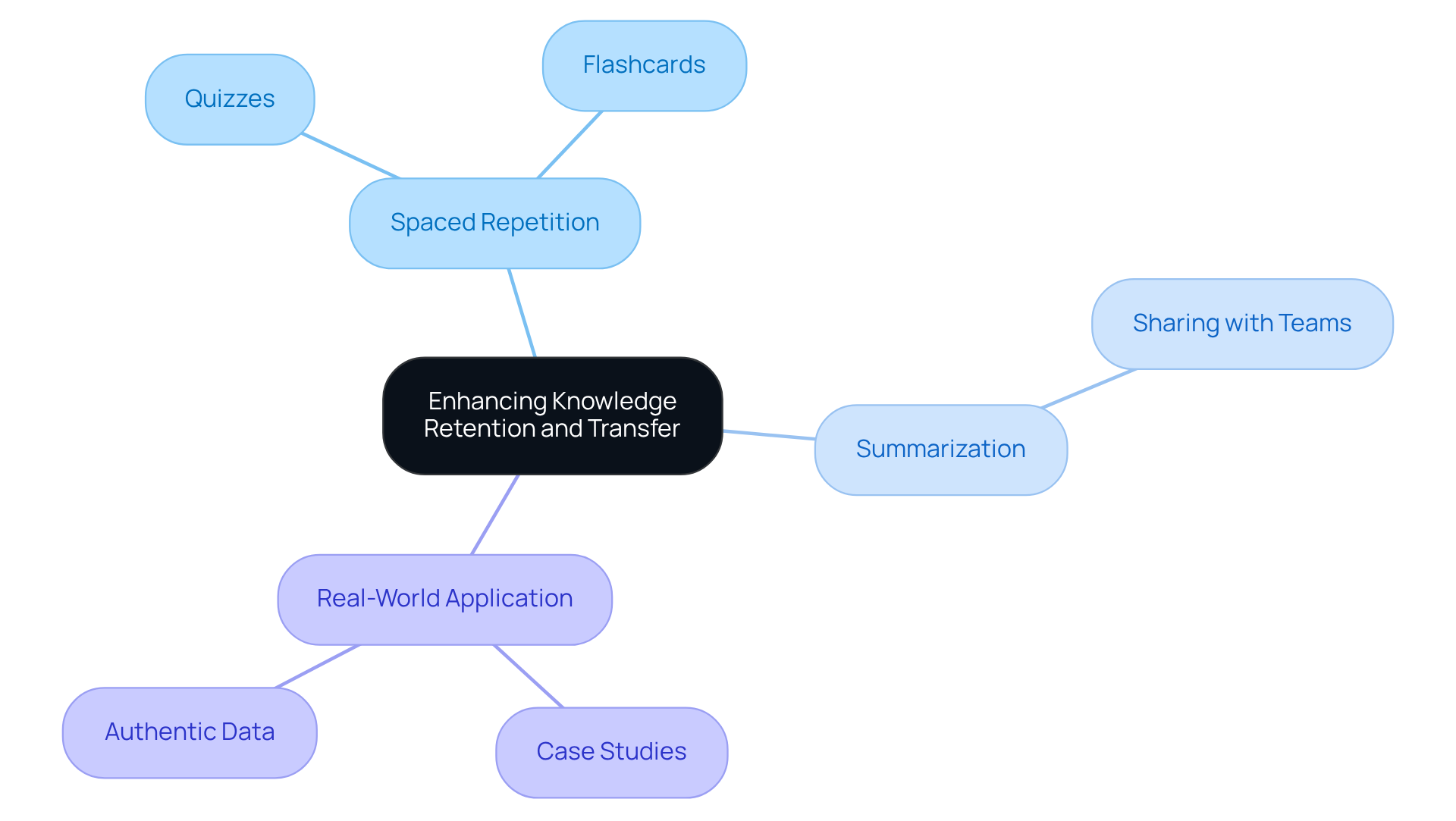
Conclusion
You might be wondering how effective instruction guides can really make a difference. Well, it all comes down to implementing essential practices that boost engagement and improve learning outcomes. By focusing on your audience right from the start, setting clear learning objectives, and helping learners recall what they already know, educators can craft a learning experience that truly resonates. These strategies lay the groundwork for instruction guides that not only inform but also empower learners to put their knowledge into action.
Throughout this article, we’ve explored some key insights, like how important it is to:
- Present content in a structured way
- Provide ongoing learning support
- Include practical applications to reinforce understanding
Plus, using self-assessment tools and performance assessments highlights the need for continuous feedback and evaluation in the learning journey. By weaving these best practices into the fabric of your instruction, organizations can really boost knowledge retention and application—leading to better educational outcomes.
In today’s fast-paced educational environment, embracing these practices isn’t just a nice-to-have; it’s essential. So, let’s encourage organizations to adopt these strategies and cultivate a culture of active learning and continuous improvement. By utilizing tools like SowFlow to streamline the creation and updating of instruction guides, educators can keep their materials fresh and effective. Committing to enhancing instructional practices not only ramps up learner engagement but also drives operational efficiency and success in reaching educational goals. So, what are you waiting for? Let’s dive in and make those instruction guides work for you!
Frequently Asked Questions
How can I capture my audience's attention from the start?
To capture your audience's attention, start with a compelling introduction that highlights the importance of the content. Using storytelling techniques or relatable scenarios can effectively draw people in.
What is an example of a compelling introduction?
An example is a quote from Anastasia Masadi, a Product Owner, who described SowFlow as a "game changer" for documenting work and creating SOPs. This real-world experience connects with audience needs and illustrates how SowFlow enhances efficiency.
Why are clear objectives important for effective learning?
Clear and concise objectives set expectations for the audience, helping them assess their understanding as they progress through the material. Research shows that well-defined educational objectives boost learner performance by providing direction and clarity.
What should educational objectives include?
Educational objectives should include specific, measurable outcomes, such as "users will be able to create a new project within the software by the end of the instruction guides." This targeted approach enhances the instructional experience.
How can SowFlow assist in creating effective instruction guides?
SowFlow's instant documentation solution allows users to quickly create and update educational objectives with features like template customization and real-time collaboration, making the guides relevant and saving time.
How can I stimulate recall of prior knowledge in learners?
Incorporating reflective questions or prompts can engage learners and boost their understanding of new concepts. Encouraging users to think back on similar tasks they’ve tackled can enhance their grasp of new information.
What is the benefit of connecting new content to prior knowledge?
Research indicates that students who engage in reflective practice experience less knowledge loss and develop a deeper understanding of new concepts. This connection makes it easier for users to absorb new information.
What tools can help enhance the recall of prior knowledge?
Tools like advance organizers, such as K-W-L charts, can help individuals structure their thoughts and connections. It’s important to avoid overwhelming learners with too many questions at once to ensure effective learning.
👍
What others are liking
5 Steps to outline your ideal documentation structure
5 MINS READ
Where to start the your journey of mapping out your ideal documentation structure, aligning it with the very heartbeat of your organization?
Defining a winning level of detail in your process
3 MINS READ
What is too much detail, and what is too little? This article described in that winning level detail about what detail is enough.





